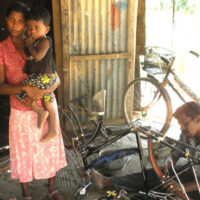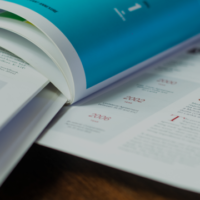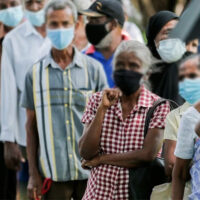Recommendations for Methodological Improvements on the Aswessuma Poverty Identification Measure
Nulakshi Dissanayake, Varangana Ratwatta, Hemesiri Kotagama
CEPA Researchers
“The findings of our analysis underscore the importance of continuously refining and improving poverty identification measures to enhance the effectiveness of poverty alleviation efforts in Sri Lanka”.
Abstract:
This article presents suggestions to refine the poverty identification measure employed by the Aswessuma welfare benefit provision program. The Aswessuma Poverty Identification Measure (APIM) is a multidimensional tool aimed at identifying impoverished households eligible for cash transfer support. However, there are few weaknesses identified in the current APIM framework, which warrant improvements. This paper offers recommendations for enhancing the APIM, including refining the choice of poverty dimensions, conducting empirical analyses for indicator cut-offs, and estimating indicator weights endogenously. Additionally, it proposes a more transparent approach for determining the cut-off score, which could be subsequently subject to budgetary constraints. To demonstrate the feasibility of these enhancements, the methodology is applied to household data from the Kilinochi district. A logistic regression model is utilized to conduct a proxy means test, considering consumption monetary poverty as the dependent variable and multidimensional poverty indicators as independent variables. The results suggest that the proposed enhancements yield scientifically robust outcomes, ensuring the appropriateness of indicators and their assigned weights. Although the current Aswessuma methodology is deemed satisfactory, the suggested methodological improvements could further enhance its effectiveness.
Keywords: Poverty identification, Aswessuma Poverty Identification Measure (APIM), Proxy means test, Logistic regression, Kilinochi district, Methodological enhancement.
Introduction:
The Aswessuma Poverty Identification Measure (APIM) is a multidimensional tool used to identify impoverished households eligible for cash transfer support under the Aswessuma welfare benefit provision program. It considers various dimensions of poverty, including education, health, economic status, assets, housing conditions, and family demography. Each dimension is measured using a set of 22 indicators, with weights assigned based on their relative importance. However, certain weaknesses in the current APIM framework have been identified, including subjective choice of poverty dimensions, lack of objective indicator cut-offs, and exogenously determined indicator weights. These shortcomings necessitate enhancements to the APIM framework to improve its accuracy and transparency in identifying impoverished households.
Method of Analysis:
To address the weaknesses of the current APIM framework, we propose several enhancements, including refining the choice of poverty dimensions, conducting empirical analyses for indicator cut-offs, and estimating indicator weights endogenously. These enhancements aim to make the APIM more objective, transparent, and scientifically robust in identifying impoverished households.
To demonstrate the feasibility of two enhancements (choice of poverty indicators and estimating indicators weights), we apply the proposed methodology to household data from the Kilinochi district, a region known for its high poverty rates. The data from the Department of Census and Statistics, Household Income and Expenditure Survey of 2019 for the Kilinochi district is utilized for demonstrative purposes. The representative sample comprises 379 households. Kilinochchi district was intentionally selected as the study area due to its designation as one of the poorest districts, with a consumption poverty rate of 23% of households under poverty, and a national poverty line set at 6966 Rs/person/month (DCS, 2019). This deliberate selection ensures a sufficient range of variation in the primary variable (poverty) under analysis. The study encompasses a random sample of 379 households.
We utilize a logistic regression model to conduct a proxy means test, considering consumption poverty as the dependent variable and multidimensional poverty indicators as independent variables. The model considers the probability of being monetarily consumption expenditure poor P(Y=1) as a function of the independent variables using the logistic function. A household is considered monetarily consumption poor if the household monthly consumption expenditure is below the poverty line.
The logistic function is defined as:
P(Y=1) = 1/1+e−Z
Where, Z is the linear combination of the independent variables and their respective coefficients as:
Z = B0 + B1 X1 + B2 X2 + … + B n Xn
Here:
B0 is the intercept term and B1, B2 … B n are the coefficients associated with the independent variables X1 + X2 … Xn representing indicators influencing poverty. The regression estimations were conducted using the STATA software package.
The independent variables are the same multidimensional poverty indicators used by DCS (2019) as given below. Thus all independent variables were measures as 1 or 0 based on criteria given in table 1.
Table 1. Poverty indicators (independent variables Xi) and cut-offs

Source: DCS (2019)
Results:
The logistic regression estimate is given in table 2. It is observed that two variables (school attendance and chronic illnesess) were omitted due to multicollinearity. Only three variables (years of schooling, housing condition, type of fuel used) were found to be statistically significant and, therefore, deemed the most appropriate variables to measure poverty. The pseudo R-squared of the two models, one with all variables and the other with only the statistically significant variables, were very marginally different at 0.1328 and 0.1067, respectively. Consequently, all variables and their coefficients were utilized in predicting the Poverty Score (PS) of individual households using the ‘predict’ command of the STATA software. These coefficients provide endogenously estimated relative weights of the poverty indicators.
Table 2. Results of Logistic regression analysis

The poverty cut-off score of the PS was estimated by regressing the PS with household consumption expenditure (HE). Using the estimated regression equation (PS = 0.39-3E-06*HE: R2 = 0.38), the PS score equivalent to the consumption poverty line was determined to be 0.3228. Therefore, 137 households with an PS above 0.3228 are identified as poor. As a result, the percentage of poor households in Kilinochi was estimated as 36.4% by us as compared 23% estimated as monetarily poor by DCS (2019). A print of screen of STATA data and estimated all indicator based PS (last column) is given in Figure 1.

Figure 1. Screen shot of data and estimates of MDPI (all indicators model)
Discussion:
The findings of our analysis highlight the importance of refining the APIM framework to address the weaknesses identified in the current approach. By incorporating objective criteria for poverty dimensions, and indicator weights, the APIM can improve its accuracy and transparency in identifying impoverished households. Further empirical analysis should be done to decide on indicator cut-offs. These enhancements are crucial for ensuring that the Aswessuma welfare benefit provision program effectively targets the most vulnerable populations and achieves its objectives of poverty alleviation by ensuring the effective allocation of resources for poverty alleviation efforts.. However, it is important to note that further research and validation are needed to fully implement the proposed enhancements and assess their impact on poverty alleviation outcomes. The findings of our analysis underscore the importance of continuously refining and improving poverty identification measures to enhance the effectiveness of poverty alleviation efforts in Sri Lanka.
References:
Department of Census and Statistics (DCS), 2019. Household Income Expenditure Survey. Sri Lanka.
Welfare Benefits Act, No. 24 of 2002. Government Gazette. Sri Lanka.









